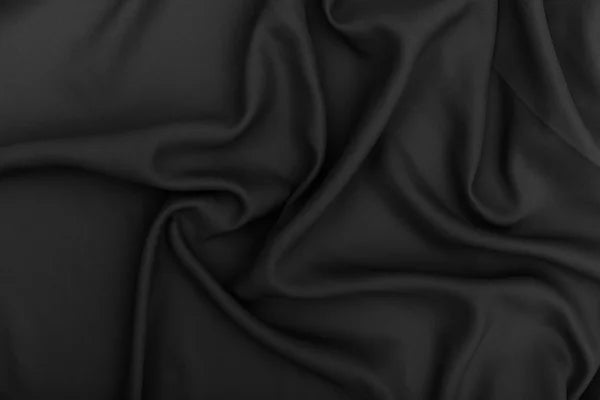
Polyester Fabric Guide
Share
As one of the most popular textiles available today, polyester is a synthetic fabric that is a type of plastic derived from petroleum. Polyester is beloved for its ability to hold its shape well, as well as dry quickly when wet. While pure polyester can be fashioned into a variety of garments, polyester is often blended with other textiles, such as cotton and rayon, to create a blended fabric that combines polyester's best qualities with the breathability of natural and semi-synthetic fibers.
In this guide, we'll walk you through the various benefits and properties of polyester, the fabric's history and place in fashion through the decades, different polyester blends, and proper care to get the most from polyester garments.
What is Polyester?

Augusta Sportswear 2430
Polyester is a man-made fabric that is derived from petroleum. Technically, it's a plastic! Ethylene glycol, a petroleum, is put through a process that produces a polymer. This polymer is then melted and transformed to create fibers. These fibers are twisted and woven together in such a way that it has a soft, smooth feel that's comfortable to wear. The end result is a bolt of polyester fabric used to create stylish garments.
So, what does polyester feel like? Polyester has a smooth, silky feel that glides over the body. But beyond its smooth drape, polyester is known for its durability and wrinkle-resistance. Better yet, an item of polyester clothing can stay looking like new for years – or even decades.
Speaking of decades, although polyester was first invented during the 1930s by W.H. Carothers, a chemist with DuPont who also developed nylon. In 1941, British scientists C.G. Ritchie and W.K. Birtwhistle built upon Carothers' work to refine synthetic fabrics. That year, a polyester fabric called Terylene was released. Then, in 1946, DuPont purchased the rights to the British team's work and used it to create the Dacron polyester blend.
After WWII, polyester was more actively marketed to the public as a fashion fabric. In the era of time-saving modern innovations (like TV dinners and kitchen gadgets), polyester was touted for its wrinkle-resistant properties in that it could be worn without ironing. The 1960s and ‘70s capitalized on the fabric, weaving it into mod shift dresses and other styles that exemplified the Swingin' ‘60s and leisure suits in the 1970s.
The fabric fell out of favor since it could sometimes feel itchy and uncomfortable. Although polyester held its shape and color and didn't need to be ironed, many found that the synthetic fabric didn't “breathe” as well as natural fibers like cotton, linen, and silk.
When high fashion designers like Calvin Klein began to blend polyester, the fabric found a resurgence. Similarly, new technology and weaving techniques have made polyester much more comfortable and soft-to-the touch. Today, it's used in microfiber that mimics silk, microfleece that feels similar to genuine sherpa, to poly-cotton and tri-blend t-shirts that are super soft and a wardrobe staple for men, women, and kids.
Is Polyester Stretchy?

Polyester itself isn't a stretchy material. However, it can be blended with other textiles – such as spandex, Lycra, or elastane – that can make it stretchier. Different weaving techniques can make polyester an ideal fabric for apparel that moves with the body and offers a form-fitting silhouette. Check the care label of your favorite pair of yoga pants or moisture-wicking polo and you'll likely see polyester as one of the key materials included alongside spandex or other stretchy textiles.
Polyester Stretch Weave Techniques

Although polyester isn't inherently stretchy, different weaving techniques can help make the fabric stretchier – even without blending it with other, more pliable fabrics. Some of these weaving techniques include:
Knit polyester weave: Knit-weave fabrics tend to have a lot more stretch than woven fabrics. This technique involves knitting polyester yarns in two opposing directions – vertical and horizontal – on a continuous loop. If you take a look at a piece of polyester clothing and stretch it in either direction, you'll likely see little “loops” that comprise the fabric. This is a prime indicator that your item of clothing uses a polyester knit weaving technique.
Stretch-weave: The stretch-weave process makes use of a weaving technique that gives structure to a garment, but also weaves a primary yarn like polyester with other, stretchier fabrics (like spandex, for example). Compared to knitted fabrics that use loops, woven fabrics weave fibers over and under each other – like a basket. The weaving process typically offers less stretch than a knitting technique, but adding in spandex, elastane, or Lycra fibers gives a piece of fabric much more pliability.
Warp-knit: Warp knit differs from more traditional knit in that yarns and fibers form a vertical loop for one cycle, then switch to a diagonal loop on the adjoining cycle before switching back to a vertical loop. As a result, yarns form a zigzag pattern that blocks wind and moisture due to the density this technique creates. You'll often find warp knitting on active wear, such as yoga pants.